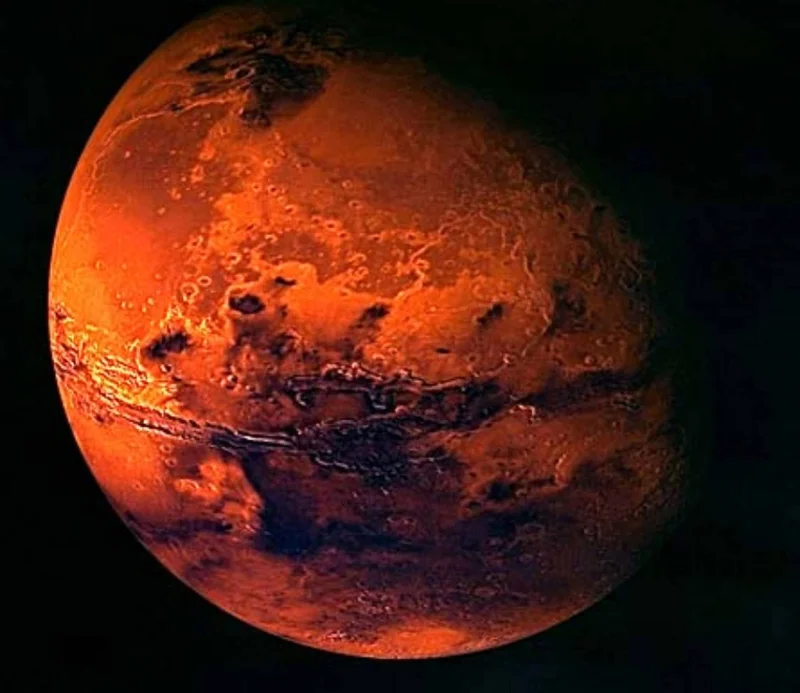NASA's Mars Sample Return mission (MSR) is facing a funding cliff, and the question isn't just about cost overruns (which are substantial, by the way). It's about whether the potential scientific payoff justifies the escalating price tag. We're talking about a mission that could ultimately cost upwards of $11 billion. That's not pocket change; that's a significant chunk of NASA's overall budget.
The core argument for MSR rests on the premise that analyzing Martian rock samples on Earth will provide definitive proof of past (or even present) life on Mars. The Perseverance rover has already identified promising samples, including one from Cheyava Falls with "our first confident detection of organic matter." High hopes, indeed.
But let's pump the brakes for a second. Even if those samples contain organic molecules, that doesn't automatically equal "life." Abiotic processes can also create organic compounds. The real smoking gun would be something like microfossils or a clear isotopic imbalance of carbon-12 and carbon-13. The challenge? Finding that needle in a Martian haystack, even with Earth-based lab equipment, is far from guaranteed.
And this is the part I find genuinely puzzling. We're spending billions on a mission predicated on finding definitive evidence, but the probability of actually finding it feels... well, less than definitive. NASA themselves acknowledge that if they don't find evidence of past life, it could suggest that life struggles to arise even under the right conditions. A negative result is still a result, sure, but is that worth $11 billion?
The debate isn't just about MSR's potential benefits; it's about the opportunity cost. As Paul Byrne, a planetary scientist at Washington University in St. Louis, put it, there was a concern that if it (MSR) had continued the way it was going, it could have eaten all the money for other missions. He's not wrong. Every dollar spent on MSR is a dollar not spent on other planetary science endeavors.

What are we potentially sacrificing? More frequent, smaller missions to Venus or the moons of Jupiter and Saturn, for example. These missions might not offer the same "life-on-Mars" headline potential, but they could provide equally valuable insights into planetary formation, climate change, and the potential for habitability in our solar system.
NASA initially planned for a sample retrieval mission costing slightly less than $6 billion. Now, we're potentially looking at almost double that. The Trump administration, for example, proposed scrapping the Mars Sample Return, which the administration described as “financially unstable.” It’s hard to argue with that assessment. According to a recent article in Scientific American, [NASA’s Mars Sample Return Mission in Jeopardy as U.S. Considers Abandoning Retrieval](https://www.scientificamerican.com/article/nasas-mars-sample-return-mission-in-jeopardy-as-u-s-considers-abandoning/).
Let's talk about sample selection. Perseverance has collected dozens of samples, but ultimately only a fraction will be returned to Earth. Who decides which samples make the cut? Scientists back on Earth, watching the rover's every move.
That introduces a degree of selection bias. Scientists are, understandably, drawn to the most "interesting" samples – those that look the most promising. But what if the key to understanding Martian geology (or even biology) lies in the more mundane, seemingly uninteresting rocks? We're essentially cherry-picking our data, which could lead to a skewed understanding of Mars.
It's a bit like a hedge fund manager only looking at the stocks with the highest potential upside. You might get lucky and hit a home run, but you're also increasing your risk of missing broader market trends. A more systematic, less biased approach might provide a more accurate picture of the overall investment landscape.
The Mars Sample Return mission is a high-stakes gamble. The potential payoff – definitive proof of life on another planet – is enormous. But the escalating costs and the inherent uncertainty of the search raise serious questions about whether the mission is the best use of NASA's limited resources. We need a sober, data-driven assessment of the risks and rewards, not just blind faith in the "life on Mars" narrative.